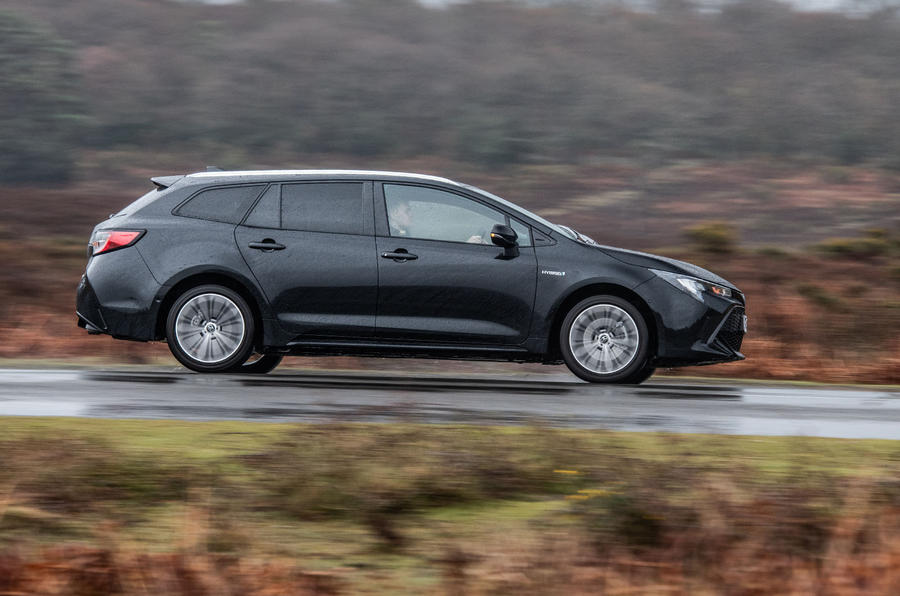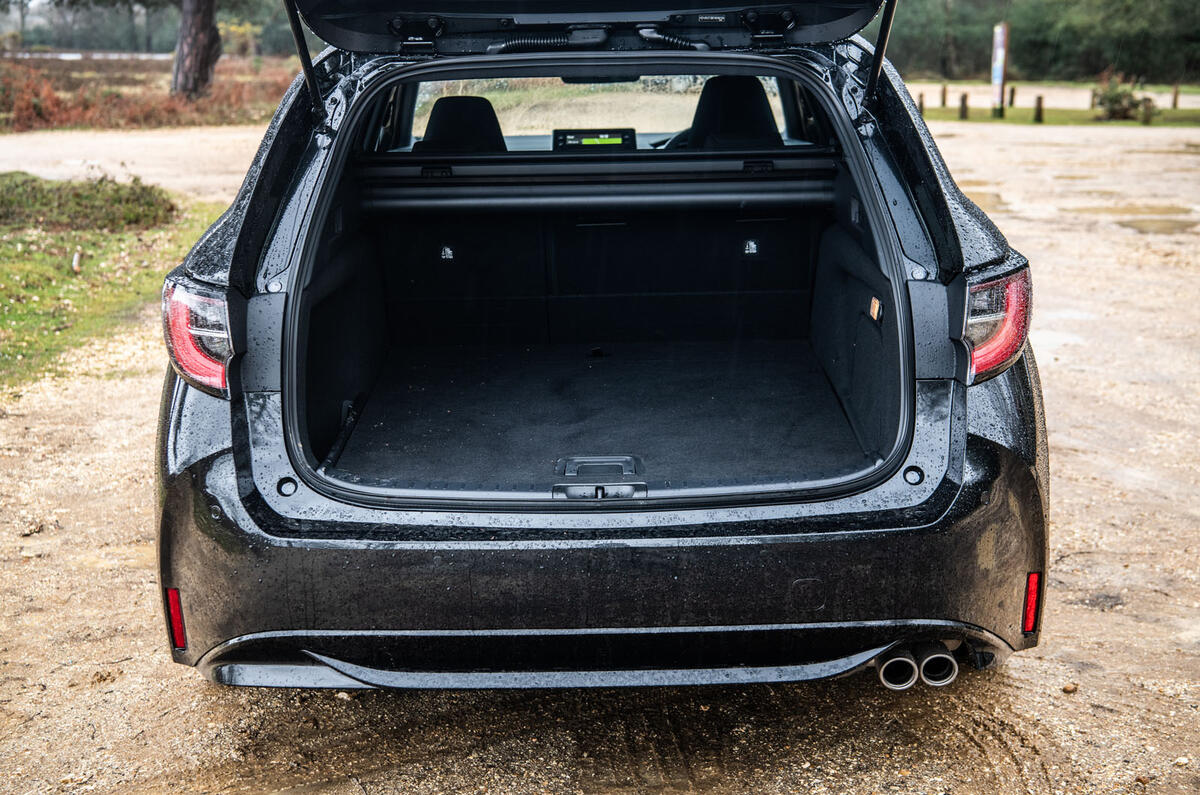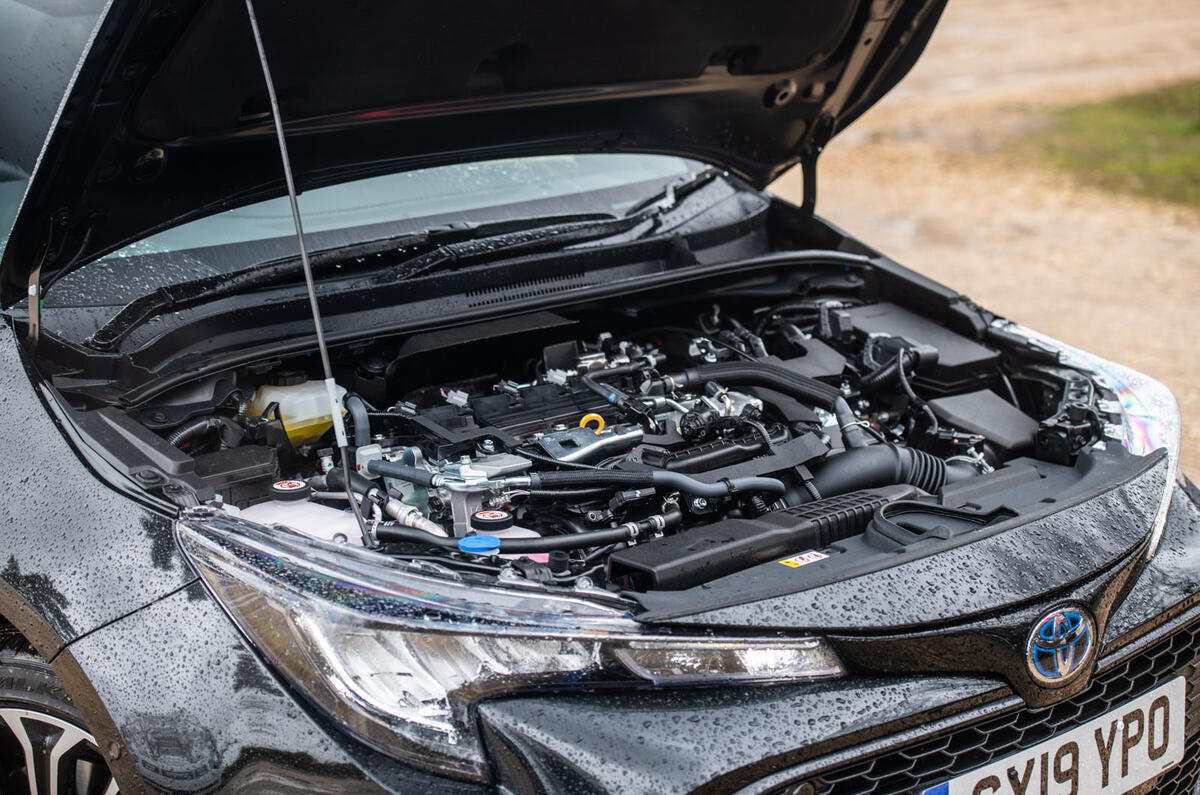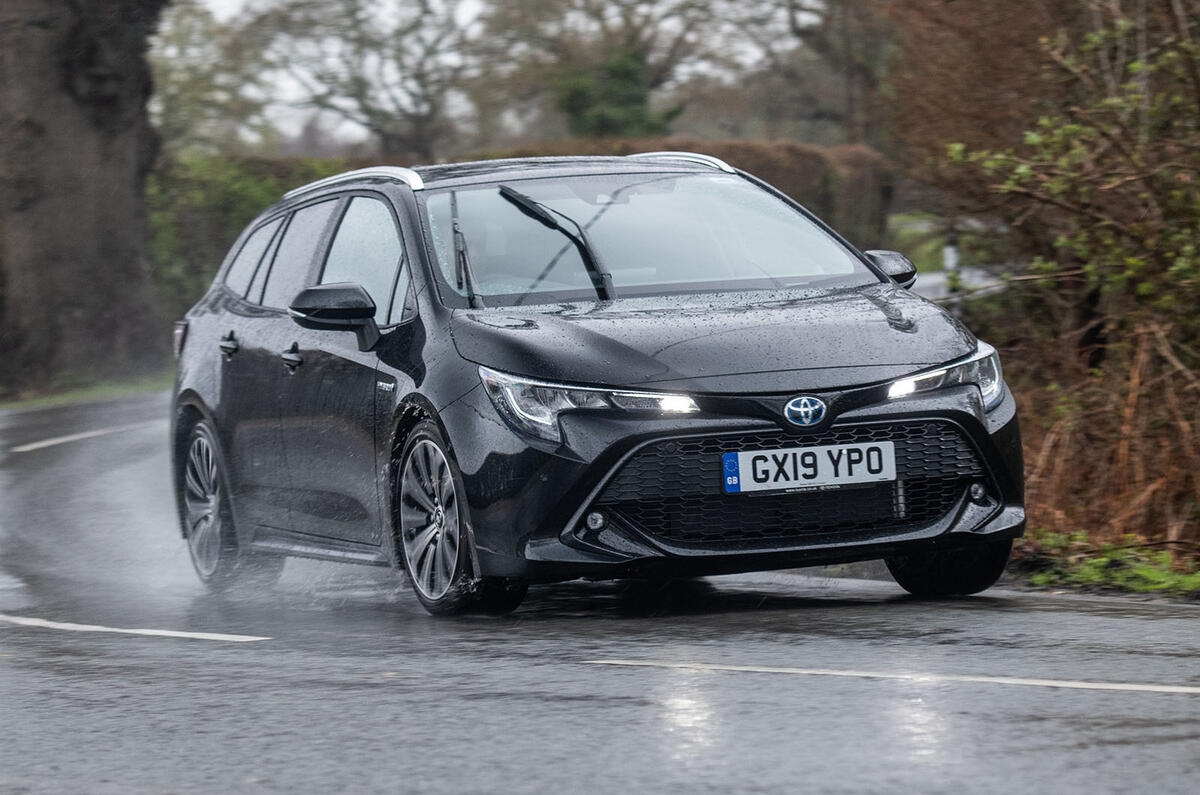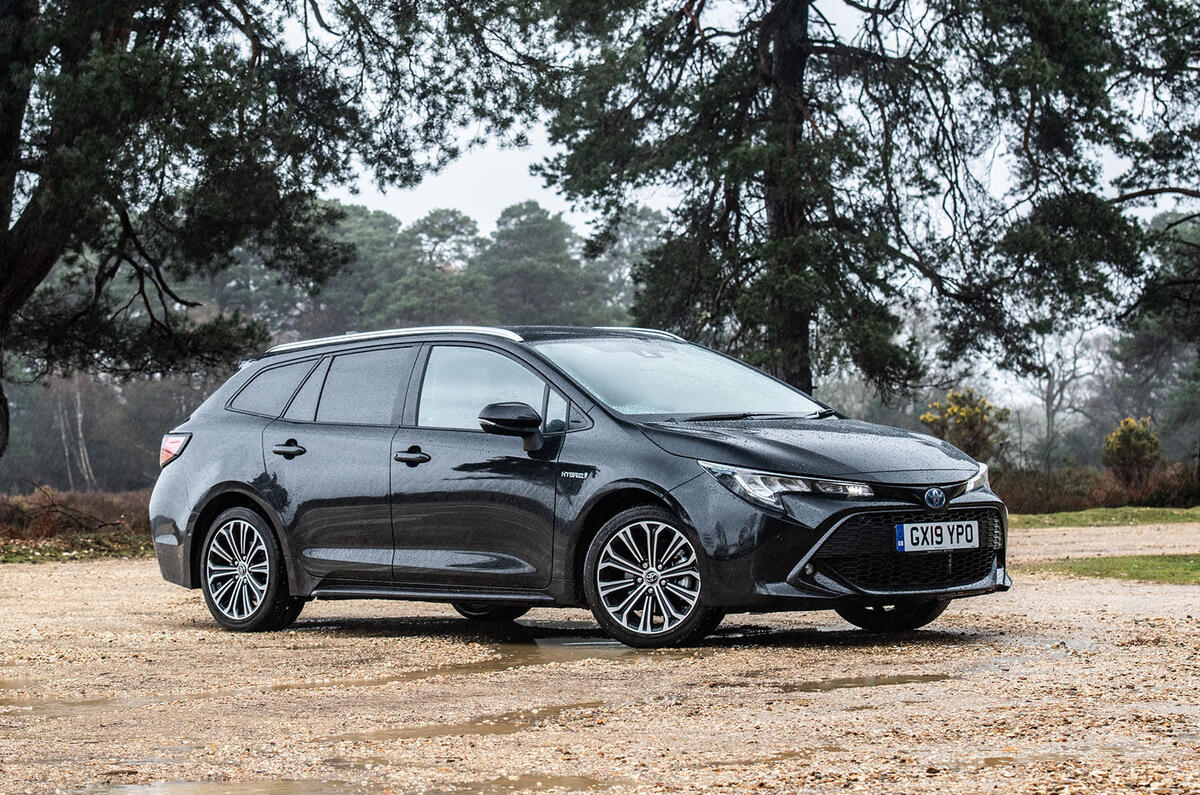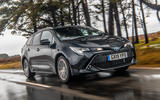The new Corolla’s cabin is one of dark plastics contrasted with satin chrome and gloss black decorative trim. Just like in so many modern hatches, it makes for a smart, classy ambience that feels very much of our technology-preoccupied digital age, but it’s also quite monotone and clinical and would benefit from a bit more variety of colour and texture.
However, there’s no shortage of quietly expensive and substantial feel about the car’s mouldings, grained finishes and switchgear; and there’s no doubt you’re sitting in a cockpit with an understated but pervasive construction of perceived quality.
The instrumentation blends analogue and digital dials, displaying engine speed and fuel level at a usefully readable scale – even if the Toyota hybrid driving experience typically makes engaging with the former somewhat pointless.
The Toyota Corolla’s infotainment offering is pretty simple. All versions get an 8.0in Touch 2 central display, and so long as you buy the car in one of the three upper trim levels, the system is upgraded to Touch 2 with Go, which has factory navigation and voice control as well.
It’s far from the biggest or most visually appealing system on the market, with some pretty average-looking menu screens, navigation mapping that’s light on detail and could be easier to programme, and a bit of latency to deal with between any fingertip input and response. A couple of rows of physical menu shortcut keys on either side of the display do at least help you to skip straight to the screen you need, though, and proper volume and tuning knobs help usability, too.



